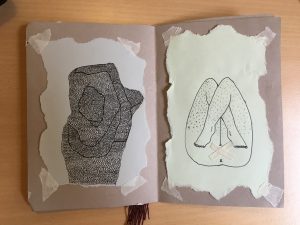“Contemporary Art A Very Short Introduction” explores art as an expression of freedom looking at certain individuals that pushed the boundaries of self expression thus changing the rules over what are could be and breaking stereotypes plus challenging social, personal and cultural boundaries. The book scrutinises the purpose of art in society through times of political strife and war and how art changed to reflect the artist’s opinions and stance on politics. It goes on to explore how art struggled to sell and create during certain economic periods (e.g the wall street crash 1929) and how it affected the style of artwork being produced and the overall production of art as a whole thus creating the business it has become.
The overall tone of the book is both informative and also it questions the subject matter it’s describing as it questions the attention and responses that artists and artwork.
“The presence is no longer that of the artist-genius, but of the audience, temporarily warned by a democratic ideal that treats their thoughts and actions as valuable, or at least recognises their potential for creative engagement.”
It often scrutinises the reasoning behind certain works and the elements within and what they become as a combination when a viewer/audience is introduced. It challenges contemporary as a whole as through contemporary art we are allowed to express ourselves freely but our freedom is something that is forced upon us in that we have freedom to create and we cannot remove or deny this creativity.
Stallabrass, J (2006) Contemporary Art A Very Short Introduction. New York, Oxford University Press Inc.


